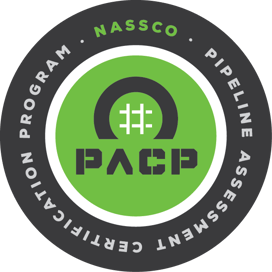Keeping sewer inspection software up to date can help a wastewater system run more efficiently. In addition to ensuring quality data, upgrading your system allows your operators to take advantage of new features and update existing ones.
But staying on top of changes in the assessment process goes beyond the software, too. Using up-to-date resources for classifying, evaluating and managing inspection data — like the Pipeline Assessment Certification Program — ensures your data consistently meets international standards.The updates to PACP — the leading North American Standard for identifying and assessing defects in pipes — routinely reflect elements operators feel are missing from the program or ways to simplify the reporting process and make the results easier to utilize.
Improved Program
Upgrading to the latest version of PACP, version 7.0, brings a number of benefits, including technical and educational advantages.
One of the most anticipated changes in PACP 7.0 is that reports now reflect risk assessment ratings for pipe condition on a scale of 1-5, in addition to providing an overall rating. Previously, PACP required software like WinCan to get the ratings. They are now automatically included in the exported reports.
Version 7.0 also provides a more user-friendly and informative coding program. A key technical update allows users to add background notes to technical codes, such as deterioration mechanisms and stages of sewer collapse. The program’s header form is also more robust with 10 custom fields. There are some redefined and new options, which allow for more information on the existing database. The new fields include: “Reviewed By” and “Certificate Number”; “Coating”; “Vertical Datum”; “Lining Method”; and “Inspection Technology Used.”
New Features
Additionally, the latest update has added code modifiers, LACP codes and condition grades.
The new version also offers educational benefits. The training materials now follow the manual more closely. The rules for continuous defects have been clarified, and a new appendix helps field personnel more easily identify pipe materials.
The improved user-friendly elements include a new color codes chart for header codes, which assists in populating the fields; a manhole measurement diagram that simplifies identifying the component being measured; and a manual that can be more easily updated.
Why Upgrade?
Having thorough reports that reflect detailed data for each individual sewer system is crucial for understanding and developing a durable system. Keeping all elements of the sewer inspection and reporting process up to date maximizes productivity and can aid in the longevity of a successful system.
To learn more about the broader impact of defect catalogs and how they continue to shape the sewer inspection industry, download our FREE white paper, "How Observation Catalogs Transform Sewer Inspection."






